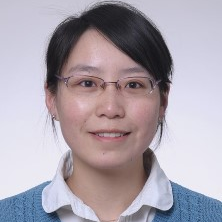Advances in Nonlinear Optics and Symmetry
A special issue of Symmetry (ISSN 2073-8994). This special issue belongs to the section "Chemistry: Symmetry/Asymmetry".
Deadline for manuscript submissions: closed (31 October 2022) | Viewed by 4104
Special Issue Editors
Interests: theory of nonlinear phenomena such as nonlinear optical and multiferroic properties of solid materials; electronic structures theory based on first-principles methods and model studies; superconductivity and many-body interactions such as electron–phonon, electron–magnon; rare-earth-based laser crystals and other luminescent materials; theory and first-principles study of photo-catalysis
Interests: materials chemistry; electronic band structure calculations; high-throughput computational materials design; optical properties; superconductivity; structure–property correlations
Special Issue Information
Dear Colleagues,
The study of nonlinear optics is closely related to symmetry. For example, second-order nonlinear optical interactions (described by a χ(2) susceptibility) can occur only in noncentrosymmetric crystals—that is, in crystals that do not display inversion symmetry. The study of how to obtain materials without inversion symmetry is a critical issue in the design and synthesis of new nonlinear optical materials. Moreover, the essential properties for nonlinear optical materials including second harmonic generation tensor and birefringence are also determined by symmetry (i.e., crystal symmetry, intrinsic symmetry, and Kleinman symmetry). Therefore, symmetry is also a topic of intensive investigation in the structure–property relationship in nonlinear optical materials.
This Special Issue invites researchers to submit original research papers and review articles related to nonlinear optical materials in which theoretical or experimental issues of symmetry are considered. The topics of interest include but are not limited to:
- Symmetry in second-order nonlinear optical response;
- Symmetry in third-order nonlinear optical response;
- Symmetry in phase matching;
- Symmetry in structure–property relationships;
- Synthesis of noncentrosymmetric crystals;
- Theoretical design of noncentrosymmetric structure.
Dr. Shuiquan Deng
Dr. Xiyue Cheng
Guest Editors
Manuscript Submission Information
Manuscripts should be submitted online at www.mdpi.com by registering and logging in to this website. Once you are registered, click here to go to the submission form. Manuscripts can be submitted until the deadline. All submissions that pass pre-check are peer-reviewed. Accepted papers will be published continuously in the journal (as soon as accepted) and will be listed together on the special issue website. Research articles, review articles as well as short communications are invited. For planned papers, a title and short abstract (about 100 words) can be sent to the Editorial Office for announcement on this website.
Submitted manuscripts should not have been published previously, nor be under consideration for publication elsewhere (except conference proceedings papers). All manuscripts are thoroughly refereed through a single-blind peer-review process. A guide for authors and other relevant information for submission of manuscripts is available on the Instructions for Authors page. Symmetry is an international peer-reviewed open access monthly journal published by MDPI.
Please visit the Instructions for Authors page before submitting a manuscript. The Article Processing Charge (APC) for publication in this open access journal is 2400 CHF (Swiss Francs). Submitted papers should be well formatted and use good English. Authors may use MDPI's English editing service prior to publication or during author revisions.
Keywords
- noncentrosymmetric
- nonlinear optical materials
- second harmonic generation
- inversion symmetry
- phase matching






